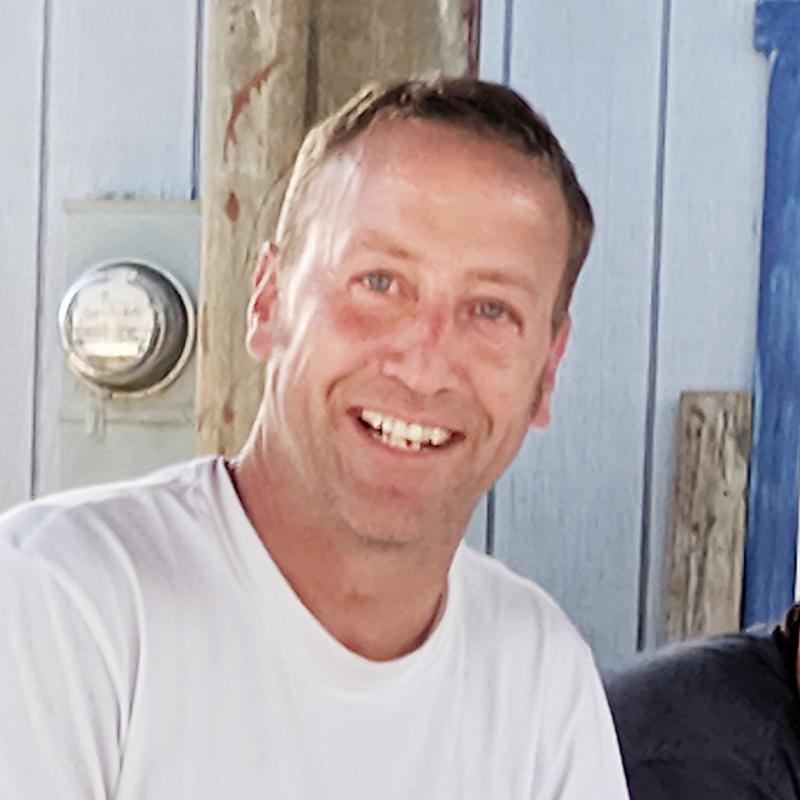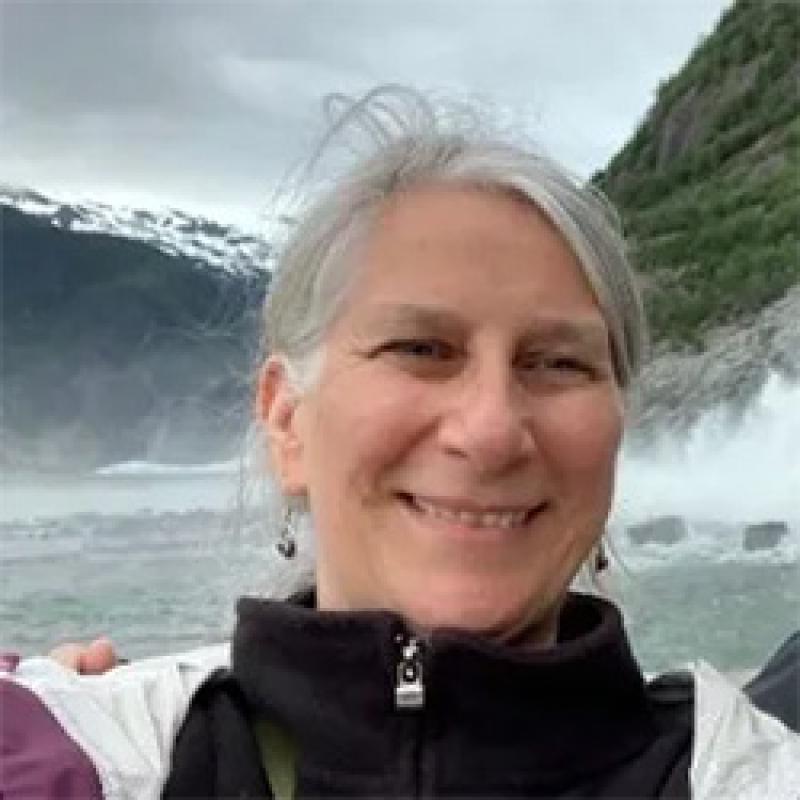What We Do
Scientists at the Alaska Fisheries Science Center's Auke Bay Laboratories study commercially important fish species such as rockfish, sablefish, and salmon. They conduct research to better understand where fish live during each stage of life and pinpoint what makes them unique, down to their DNA. They also examine marine ecosystems that are essential fish habitats, focusing on ocean processes and chemistry, and food web interactions that impact fish survival.
Our goal is to estimate how many fish are in Alaska's waters through stock assessments. We also want to learn the overall health of fish species, the habitats they utilize, and the ecosystem upon which they depend. We do this through research surveys, laboratory experiments, and by updating mathematical models to gain the best information about Alaska's commercial fish. The data biologists collect is given to the North Pacific Fishery Management Council, Alaska Regional Office, fishing industries, state and federal regulators, and international groups. These groups make decisions on how much fish can be sustainably caught.
Marine Ecology and Stock Assessment Program
The Marine Ecology and Stock Assessment Program has three primary functions. We 1) conduct annual stock assessments to manage the fisheries resources in Alaska waters, 2) conduct annual surveys to assess the status of these resources, and 3) perform ecological research process studies to inform stock assessments and advance ecosystem-based fisheries management.
Specifically, we produce annual stock assessment and fishery evaluation reports for sablefish, rockfish, and sharks in Alaska. We use a variety of fish population models to integrate fishery catch, survey data, biological observations, and theoretical considerations to recommend annual fish quotas. We conduct an annual longline survey and tagging studies to provide information for the stock assessments for Pacific cod, skates, Perch, Pacific halibut and other flatfish. Field and laboratory studies provide important information on different aspects of fish life history such as recruitment (i.e., when a fish is large enough to be caught by a commercial fishery), movement, growth, maturity, and natural mortality. We integrate this ecosystem process research into our stock assessments to support ecosystem-based fisheries management. Our program also conducts research on essential fish habitat, benthic habitats, and cold water corals and the effects of fishing on these sensitive ecosystem components. In our work, we often collaborate with other scientists, both within NOAA and with external partners, and with fisheries managers, stakeholders, and the general public. The Salmon Ocean Ecology and Bycatch Assessment Program provide an annual pink salmon forecast.
Recruitment, Energetics, and Coastal Assessment Program
The Recruitment, Energetics, and Coastal Assessment Program conducts research throughout Alaska’s five marine ecosystems. Our studies include zooplankton to whales and intertidal to offshore habitats. We track energy flow through the marine food web and assess factors limiting abundance and survival of marine organisms. Our analytical products are used with survey data to assess the response of juvenile fish to changing environmental conditions and the effects on fish predators and commercial fish stocks. We contribute to an ecosystem-based understanding of factors affecting commercial fish populations, protected resources (e.g., humpback whales), and essential fish habitat for making well informed, resource management decisions supporting sustainable fisheries and mariculture.
We conduct fully-integrated studies from sample collection to modeled results, and peer-reviewed publications. We conduct field projects and laboratory experiments designed to understand how fish respond to environmental change. Our state-of-the-art chemistry lab is the Center's largest analytical laboratory and offers a wide variety of analytical capabilities. We perform broad-spectrum analyses on fish health, diets, and condition to better understand food webs and processes of ecosystem change and recruitment variability. We achieve our work through extensive collaborations within NOAA and with external partnerships.
Ecosystem Monitoring & Assessment Program
Ecosystem Monitoring and Assessment Program scientists collect information from Alaska's Large Marine Ecosystems including the Arctic, Eastern Bering Sea, and Gulf of Alaska. Through research surveys and other studies we collect data and information on temperature, salinity, oxygen, nutrients, phytoplankton (tiny plants), zooplankton (marine bugs), jellyfish, and fish. We use this information to understand what causes changes in the growth, fitness, and survival of fish including: walleye pollock, Pacific cod, Arctic cod, saffron cod, sablefish, rockfishes, salmon (i.e., Chinook, chum, sockeye, pink, and coho), arrowtooth flounder, and forage fishes such as Pacific herring, capelin, sandlance. Our research results are used to help develop Alaska marine ecosystem status reports and provide scientific advice to manage and protect marine resources and human communities.
Chinook and chum salmon are incidentally caught in federally managed fisheries in the Gulf of Alaska and Bering Sea. We combine data from fishery and non-fishery sources to study targeted catch rates, bycatch rates and how bycatch varies by area and different times of year. Bering Sea and Gulf of Alaska surveys focus on early marine ecology of salmon. Field stations (Little Port Walter and Auke Creek) conduct research on factors that affect marine migration, survival and shifts in age and physical characteristics of Chinook and other salmon. Samples of Chinook and chum salmon from the commercial fishing fleet and from tagged fish caught in salmon and non-salmon fisheries are used to determine the age and stock origin (i.e., the natal streams). Information from these data sets provide a better understanding of the impact of bycatch on specific stocks of salmon.
Genetics Program
The primary goal of the Alaska Fisheries Science Center Genetics Program is to utilize genetic tools to inform management of marine resources, primarily fish and crabs. Genetic tools have the advantage of identifying subtle clues that are not recognizable using typical experimental design. For example, DNA shed by marine species (environmental, or eDNA) can track the presence of species in the ocean, even without a net. DNA has been used to track the number of Atka mackerel contributing to a fertilized egg cluster (more than 2!) and can sometimes even help identify new species.
Our three primary focal areas of research are: (1) conducting genetic stock identification on salmon caught as bycatch or in targeted fisheries to provide required information for regional, national, and international agreements and treaties, (2) investigating the stock structure and stock-specific distribution patterns of federally managed species to inform stock assessments and fisheries management, and (3) using environmental DNA and other molecular tools to understand species diversity, distribution, phenology, and ecology. In addition, we have recently started looking at how changes in the marine environment affect gene expression. Some of our current research includes determining the origin of Chinook and chum salmon stocks incidentally caught (bycatch) in the Bering Sea and Gulf of Alaska groundfish fisheries, investigating stock structure and adaptation of rockfish, Pacific cod, and sablefish, and using eDNA to investigate species diversity in a changing Arctic and in deep sea environments near coral aggregations. We are also looking at differences in the gene expression in red king, tanner, and snow crab under different ocean acidification conditions and plan to expand this research to fish.
Our Leadership

Dana Hanselman
Director, Auke Bay Laboratories
Dana Hanselman is the Director of the Auke Bay Laboratories Division of the Alaska Fisheries Science Center. Among his many achievements, Hanselman is the sablefish stock assessment lead and coauthor on several rockfish assessments. He also served as co-chair of the Bering Sea/Aleutian Islands Groundfish Plan Team, and is currently a member of the Council’s Scientific and Statistical Committee.

Angela Doroff
Deputy Director, Auke Bay Laboratories
Angela Doroff is the Deputy Director of the Auke Bay Laboratories Division of the Alaska Fisheries Science Center. She began her career in coastal Alaska as a wildlife biologist for the U.S. Fish and Wildlife Service's Alaska Science Center and the Marine Mammals Management division in Anchorage, Alaska while concurrently serving as the sea otter species representative to the Otter Specialist Group in the IUCN.
Management Team
Auke Bay Laboratories
Dana Hanselman
Director, Auke Bay LaboratoriesAngela Doroff
Deputy Director, Auke Bay Laboratories-
-
Facilities
John Cooper, Program Manager
-
Facilities
-
-
Ecosystem Monitoring and Assessment
Ed Farley, Program Manager
-
Ecosystem Monitoring and Assessment
-
-
Marine Ecology & Stock Assessment
Chris Lunsford, Program Manager
-
Marine Ecology & Stock Assessment
-
-
Genetics Program
Wes Larson, Program Manager
-
Genetics Program
-
-
Recruitment, Energetics, and Coastal Assessment Program
Robert Suryan, Program Manager
-
Recruitment, Energetics, and Coastal Assessment Program
Other Locations
Auke Bay Laboratories
The Auke Bay Laboratories is headquartered at the Ted Stevens Marine Research Institute. This "green" facility includes 66,000 square feet of office space and 33,000 square feet of lab space. It is located at Lena Point, north of Juneau, Alaska. Other facilities include: Auke Bay Marine Station – Auke Bay, Juneau AK, the Auke Creek Research Station – Auke Creek, Juneau, AK, Juneau Subport and Dock – downtown Juneau, AK, Little Port Walter Marine Station – on southern Baranof Island and Pribilof Island facilities – Bering Sea, Alaska.
Auke Creek Research Station
Located 12 miles from downtown Juneau, Auke Creek Research Station is operated by the Auke Bay Laboratories Salmon Ocean Ecology study program on a cooperative basis with University of Alaska Fairbanks, the Alaska Department of Fish and Game, and the University of Alaska Southeast. The long time series of observations on the seven anadromous fish species made at the Station’s counting weir is not available elsewhere in Alaska. First hand evidence of changes in fish populations in response to climate change is provided by the biological and environmental information generated at this Station. Its information is also used by ADF&G to guide harvest management decisions on commercial and recreational fisheries in the region. An experimental hatchery located near the mouth of the stream provides insights into the genetic basis for many aspects of the behavior of anadromous fish species, and it has been used to train three generations of graduate students in genetics and salmonid biology. The accessibility of the Station by road from the urban area of Juneau makes it a popular scientific educational resource for Juneau Public Schools and the general public.
Little Port Walter Research Station
NOAA’s Little Port Walter Research Station (LPW) was established in 1934 and is the oldest year-round biological field station in Alaska. LPW is located on the southeastern side of Baranof Island, approximately 115 miles south of Juneau, Alaska, in a pristine and biologically strategic location on U.S. Forest Service land in the Tongass National Forest. Over the last 90 years, LPW has served scientists studying the ecology and evolution of Pacific salmonids, the effects of hatchery practices on genetic and life history diversity of salmon, rockfish behavior, coral growth rates, age and growth studies of groundfish, and the ecology of other marine organisms. This research has also included numerous government and stakeholder collaborators, university professors and graduate students, and interns from across the United States. Activities at LPW have contributed to several hundred publications, reports, and documents that improve our scientific understanding of marine resources important to Alaska and the nation. LPW’s Chinook salmon research also contributes to salmon management under the Pacific Salmon Treaty, specifically for stock assessment and the estimation of harvest rates for Southeast Alaska Chinook populations. Scientists at LPW are currently engaged in research that improves our understanding of sustainable aquaculture (salmon, oysters, kelp), salmon ecology and evolution, and transportation and bioaccumulation of chemicals in commercial fish stocks. LPW is also contributing to the development of transformative approaches to rapidly assess critical life history stages and energetic responses of marine fishes to climate change.
Advanced Technologies
NOAA Fisheries is a leader in the use of advanced technologies. Our scientists use a variety of technologies to study the marine environment and the species that call it home.
